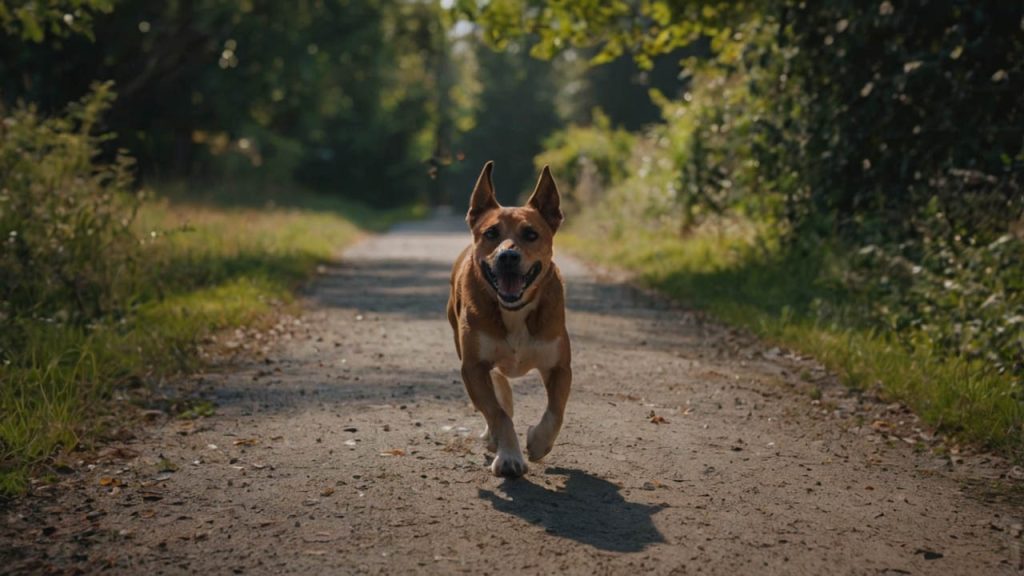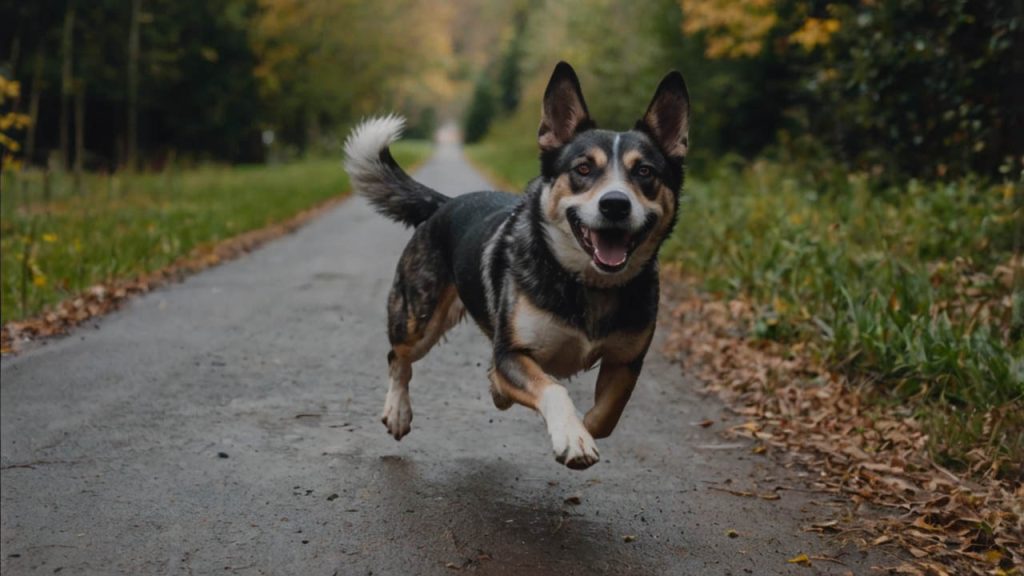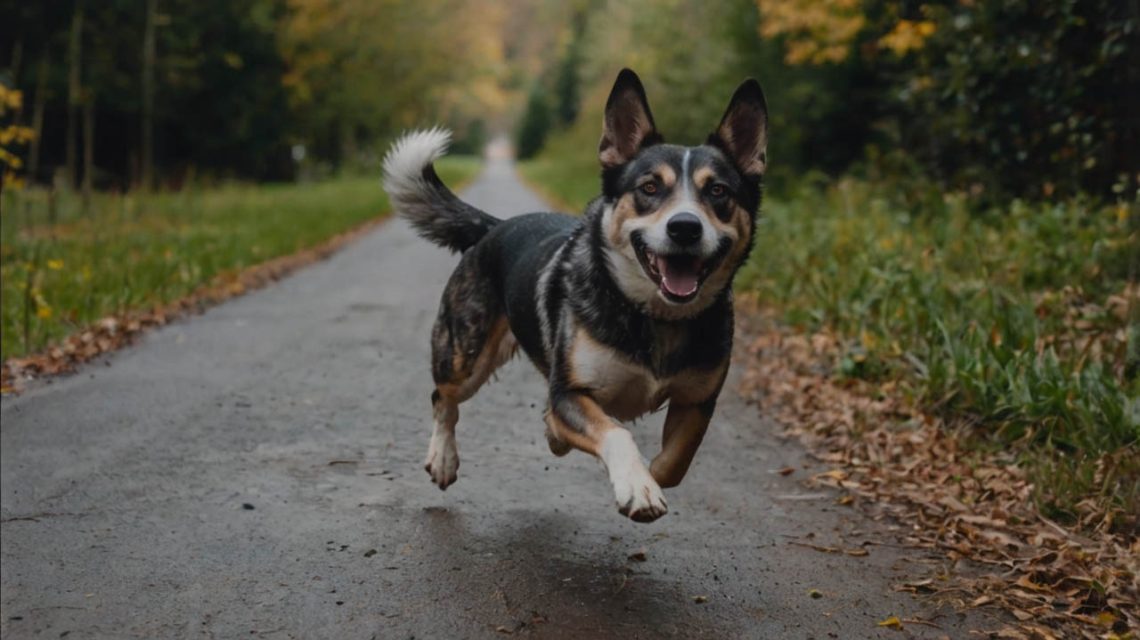Introduction: When Every Second Counts
Discovering what to do if your dog runs away requires immediate, strategic action that maximizes your chances of a safe reunion. Every year, approximately 10 million pets go missing in the United States, yet dogs with proper identification return home 90% of the time. Therefore, knowing exactly what to do if your dog runs away transforms panic into purposeful action that brings your beloved companion home safely.
Most importantly, the first 24 hours prove critical when determining what to do if your dog runs away. Research from the ASPCA indicates that 93% of missing dogs found within the first day return home successfully. Furthermore, having an action plan ready prevents wasted time during those crucial initial moments.
Immediate Actions: What to Do If Your Dog Runs Away
First 10 Minutes: Critical Response Steps
When you first realize your dog has escaped, resist the urge to panic. Instead, take these immediate actions:
Check nearby hiding spots first. Many dogs don’t actually run far initially. Subsequently, they hide in bushes, under porches, or behind buildings near home. Therefore, conduct a thorough search of your immediate property before expanding outward.
Leave familiar items outside. Place your dog’s bed, favorite toys, and recently worn clothing near entry points. Moreover, these scent markers help guide lost dogs home. Additionally, leave water but avoid food initially, as it might attract other animals.
Alert household members immediately. Everyone should know what to do if your dog runs away to coordinate efforts effectively. Furthermore, assign specific tasks: one person stays home, another drives slowly through the neighborhood, and someone else contacts local resources.

Calling Your Dog Effectively
Next, use strategic calling techniques. Avoid frantically shouting your dog’s name repeatedly. Instead, call calmly using your normal tone. Frightened dogs often hide from loud, stressed voices. Therefore, maintain composure even during this stressful situation.
Moreover, incorporate familiar sounds your dog associates with positive experiences. Shake a treat bag, squeak their favorite toy, or use specific phrases like “dinnertime” or “want to go for a walk?” Consequently, these triggers might overcome fear and bring them out of hiding.
Expanding Your Search: What to Do If Your Dog Runs Away
Creating an Effective Search Pattern
After checking immediate surroundings, expand systematically. Start with a one-mile radius from your home. Furthermore, dogs typically follow linear features like fence lines, trails, or creek beds. Therefore, prioritize these routes during your search.
Additionally, consider your dog’s personality when planning search areas:
- Social dogs often approach people or other dogs
- Fearful dogs hide in quiet, secluded spots
- Food-motivated dogs investigate restaurants or garbage areas
- Prey-driven dogs follow wildlife trails
Most importantly, search during quiet times. Early morning and dusk provide optimal conditions when fewer distractions exist. Subsequently, you’re more likely to spot or hear your dog.
Leveraging Technology and Resources
Modern technology significantly improves search effectiveness. Download pet-finding apps like Finding Rover or PawBoost immediately. These platforms alert local users about missing pets instantly. Furthermore, they use facial recognition technology to match found dogs with missing pet reports.
Contact these resources within the first hour:
- Local animal shelters (call every 2 hours initially)
- Veterinary clinics within 10 miles
- Animal control offices
- Police non-emergency lines
- Local rescue organizations
Moreover, many communities have dedicated lost pet Facebook groups. Post immediately with clear photos and specific details. Consequently, hundreds of local residents become extra eyes searching for your dog.

Understanding Lost Dog Behavior: What to Do If Your Dog Runs Away
How Dogs React When Lost
Understanding canine psychology helps predict your dog’s movements. Initially, dogs experience an adrenaline surge that can carry them miles from home. However, once this wears off, they often seek shelter and remain stationary.
According to Missing Animal Response Network, dogs exhibit three primary behaviors when lost:
- Gregarious dogs approach people readily
- Aloof dogs avoid human contact but remain visible
- Xenophobic dogs hide and run from everyone, including owners
Therefore, adjust your search strategy based on your dog’s temperament. Fearful dogs require patience and indirect approaches. Meanwhile, friendly dogs might already be with helpful strangers.
Environmental Factors Affecting Lost Dogs
Weather conditions significantly impact lost dog behavior. During storms, dogs seek covered shelter. Consequently, check under decks, in sheds, or beneath vehicles. Furthermore, extreme temperatures drive dogs toward climate-controlled areas.
Additionally, consider recent environmental changes. Construction noise might push dogs away from familiar areas. Therefore, expand searches beyond usual territories during disruptive events. Moreover, seasonal factors like breeding season can influence intact dogs’ travel patterns.
Creating Effective Lost Dog Posters
Designing High-Impact Flyers
Effective posters dramatically increase recovery chances. Include these essential elements:
Large, clear “LOST DOG” heading visible from passing cars. Subsequently, use bright colored paper that stands out. Fluorescent colors attract 70% more attention than white paper.
Multiple photos showing different angles. Include distinguishing features prominently. Furthermore, show your dog’s typical expression and body posture. Therefore, people recognize them more easily in various positions.
Specific details without overwhelming text:
- Breed, size, and color
- Name (though lost dogs rarely respond)
- Date and location last seen
- Any medical conditions
- Your phone number (large font)
Most importantly, avoid including reward amounts initially. This prevents false sightings from people hoping for money. However, consider adding rewards after 48 hours if needed.
Strategic Poster Placement
Distribution matters as much as design. Post flyers at:
- Intersections where drivers stop
- Convenience stores and gas stations
- Dog parks and walking trails
- Community bulletin boards
- Mailbox clusters in neighborhoods
- School entrances (kids are excellent spotters)
Furthermore, refresh posters daily if weather damages them. Replace faded or torn flyers immediately. Consequently, maintaining visibility keeps your search active in community consciousness.
Digital Strategies: What to Do If Your Dog Runs Away
Maximizing Social Media Reach
Social media amplifies your search exponentially. Create shareable posts with:
- Clear, recent photos
- Exact last seen location
- Time and date
- Contact information
- Share request
Moreover, update posts regularly with search progress. This maintains engagement and prevents information from becoming buried in feeds. Additionally, thank supporters publicly to encourage continued sharing.
Furthermore, contact local influencers or community pages. Many have thousands of followers who can spread information quickly. Therefore, one share from a popular account might reach your entire city within hours.
Online Pet Recovery Databases
Register your missing dog on multiple platforms immediately:
- Petfinder’s Lost & Found
- Finding Rover
- PawBoost
- Nextdoor
- Craigslist (both lost and found sections)
- Local shelter websites
Subsequently, check these sites’ “found” sections hourly initially, then several times daily. Many good Samaritans post found dogs before contacting shelters. Therefore, monitoring these platforms prevents delays in reunification.
Professional Resources and Support
When to Hire Pet Recovery Specialists
After 72 hours, consider professional help. Pet detectives use specialized techniques including:
- Tracking dogs trained to follow scent trails
- Thermal drones for searching large areas
- Wildlife cameras for monitoring feeding stations
- Humane traps for fearful dogs
Although services cost 500−500−1,500 typically, success rates justify expenses for many families. Furthermore, professionals provide emotional support during traumatic searches.
Working with Animal Control
Maintain positive relationships with animal control officers. They patrol regularly and know local strays. Moreover, provide them with flyers and your contact information. Subsequently, they’ll recognize your dog if encountered.
Additionally, understand local ordinances regarding lost pets. Some jurisdictions require found dogs be held specific periods. Therefore, knowing regulations prevents permanent adoption by others.
Prevention Strategies: What to Do If Your Dog Runs Away
Escape-Proofing Your Property
Preventing future escapes requires comprehensive property assessment. Inspect fencing for:
- Gaps beneath gates
- Weak or rotted sections
- Climbing aids like furniture near fences
- Digging zones along fence lines
Furthermore, install secondary barriers for known escape artists. Double-gating systems prevent door-darting. Additionally, window screens must withstand pushing from excited dogs.
Moreover, address motivation for escaping. Bored dogs seek adventure elsewhere. Therefore, increase mental stimulation through training, puzzles, and varied activities. Consequently, satisfied dogs feel less compelled to roam.
Identification and Technology Solutions
Multiple identification forms maximize recovery chances:
Microchipping provides permanent identification. Update registration whenever you move or change phone numbers. Furthermore, verify chip functionality during annual vet visits.
GPS collars offer real-time tracking capabilities. Modern devices send alerts when dogs leave designated areas. Subsequently, you know immediately about escapes.
Traditional ID tags remain essential despite technology. Include:
- Your phone number
- Secondary contact
- “NEEDS MEDICATION” (even if untrue) to encourage quick returns
- “REWARD” without specific amount
Additionally, consider QR code tags linking to online profiles with detailed information.
Emotional Support During the Search
Managing Stress and Maintaining Hope
Searching for a lost dog creates enormous emotional strain. However, maintaining composure improves decision-making. Therefore, practice self-care during searches:
- Take breaks to eat and rest
- Accept help from friends and family
- Avoid blaming yourself or others
- Focus on productive actions
Furthermore, remember that dogs survive surprisingly well outdoors. Studies show that dogs have been recovered healthy after months missing. Consequently, never give up hope entirely.
Building Community Support Networks
Unite your community in search efforts. Create search parties for systematic area coverage. Moreover, establish communication channels through group texts or messaging apps. Therefore, information spreads quickly among searchers.
Additionally, local businesses often help by:
- Displaying posters prominently
- Sharing on business social media
- Allowing poster placement
- Watching for your dog
Most importantly, express gratitude for all assistance. Community goodwill proves invaluable during extended searches.
Success Stories and Case Studies
Real Recovery Examples
Case 1: Buddy’s Storm Escape
During a thunderstorm, Buddy bolted through an open gate. His family immediately posted on neighborhood Facebook groups. Subsequently, multiple sightings helped track his path. After 18 hours, a jogger found him hiding in a drainage pipe two miles away.
Case 2: Luna’s Week-Long Adventure
Luna, a shy rescue, escaped during a move. Traditional searching failed because she ran from everyone. Therefore, her owners set up a feeding station with a wildlife camera. After five days, they confirmed her presence and successfully trapped her using a humane cage.
These stories demonstrate that knowing what to do if your dog runs away and acting strategically brings dogs home safely.
Long-Term Considerations
If Your Dog Isn’t Found Immediately
After two weeks, adjust strategies while maintaining hope. Continue refreshing posters and online posts. Furthermore, expand search radius gradually. Dogs can travel surprising distances over time.
Moreover, contact shelters in expanding circles weekly. Sometimes dogs arrive at distant facilities through good Samaritan transport. Therefore, cast wide nets indefinitely.
Additionally, prepare for your dog’s potential return at any time. Keep gates secured and maintain familiar scents around your property. Subsequently, self-returning dogs find welcoming environments.
Reunification Preparation
When your dog returns, expect behavioral changes initially. Lost dogs often experience trauma requiring patience and understanding. Therefore, schedule veterinary examination immediately, even if they appear healthy.
Furthermore, document lessons learned for future prevention. Update identification information and strengthen escape-prevention measures. Consequently, you’ll feel more prepared and less anxious about potential future incidents.
Conclusion: Your Action Plan for Success
Knowing exactly what to do if your dog runs away transforms a terrifying situation into a manageable challenge with a positive outcome. Through immediate action, strategic searching, and community engagement, you maximize recovery chances significantly. Moreover, preparation and prevention reduce future escape risks.
Remember these critical points:
- Act immediately but remain calm
- Use multiple search strategies simultaneously
- Leverage technology and community resources
- Maintain hope while accepting help
- Learn from the experience for future prevention
Take action today: Create an emergency kit with recent photos, important phone numbers, and poster templates. Additionally, verify your dog’s identification information remains current. Update microchip registrations and ensure tags are legible.
Don’t wait until an emergency occurs to prepare. Print this guide and keep it accessible. Share these strategies with fellow dog owners. Furthermore, join local lost pet groups to help others while learning recovery techniques.
Your beloved companion depends on your knowledge and preparation. Therefore, invest time now in understanding what to do if your dog runs away. This preparation could make the difference between a brief scare and a prolonged separation.


